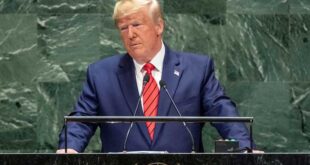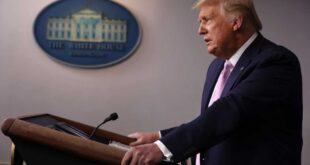Now how do you top this as a geopolitical entrance? Eight JF-17 Thunder fighter jets escorting Chinese President Xi Jinping on board an Air China Boeing as he enters Pakistani air space. And these JF-17s are built as a China-Pakistan joint project.
Silk Road? Better yet; silk skyway.
Just to drive the point home – and into everyone’s homes – a little further, Xi penned a column widely distributed to Pakistani media before his first overseas trip in 2015.
He stressed, “We need to form a ‘1+4′ cooperation structure with the Economic Corridor at the center and the Gwadar Port, energy, infrastructure and industrial cooperation being the four key areas to drive development across Pakistan and deliver tangible benefits to its people.”
Quick translation: China is bringing Pakistan into the massive New Silk Road(s) project with a bang.
The Chinese Foreign Ministry, also on cue, stressed that Pakistan would be in the frontline to benefit from the $40 billion Silk Road Fund, which will help to finance the Silk Road Economic Belt and Maritime Silk Road projects; or, in Chinese jargon, “One Belt, One Road”, that maze of roads, high-speed rail, ports, pipelines and fiber optics networks bound to turbo-charge China’s links to Europe through Russia, Central Asia and the Indian Ocean.
The Silk Road Fund will disburse funds in parallel with the new Asian Infrastructure Investment Bank (AIIB), which has already enticed no less than 57 countries. China’s assistant foreign minister, Liu Jianchao, has not delved into detailed numbers, but he assures China “stands ready to provide financing.”
So no wonder Pakistani media was elated. A consensus is also fast emerging that China is becoming “Pakistan’s most important ally” from either West or East.
Beijing’s carefully calibrated commercial offensive mixing Chinese leadership concepts such as harmonious society and Chinese dream with a “win-win” neighborhood policy seduces by the numbers alone: $46 billion in investment in Pakistan ($11 billion in infrastructure, $35 billion in energy), compared to a U.S. Congress’s $7.5 billion program that’s been in place since 2008.
The meat of the matter is that Washington’s “help” to Islamabad is enveloped in outdated weapons systems, while Beijing is investing in stuff that actually benefits people in Pakistan; think of $15.5 billion in coal, wind, solar and hydro energy projects bound to come online by 2017, or a $44 million optical fiber cable linking China and Pakistan.
According to the Center for Global Development, between 2002 and 2009 no less than 70% of U.S. aid was about “security” – related to the never-ending GWOT (global war on terror). As a Pakistani analyst wrote me, “just compare Xi’s vision for his neighbors and the history of America in Latin America. It is like the difference between heaven and hell.”
That “X” Factor
At the heart of the action is the China-Pakistan Economic Corridor (CPEC), whose embryo had already been discussed when Prime Minister Nawaz Sharif visited Beijing in the summer of 2013. The economic corridor, across 3,000 km, will link the port of Gwadar, in the Arabian Sea, not far from the Iranian border, with China’s Xinjiang.
China is already in Gwadar; China Overseas Port Holding Company is operating it for two years now, after helping to build the first phase. Gwadar formally opens before the end of the month, but a first-class highway and railway linking it to the rest of Pakistan still need to be built (mostly by Chinese companies), not to mention an international airport, scheduled to open by 2017.
All this action implies a frenzy of Chinese workers building roads, railways – and power plants. Their security must be assured. And that means solving the “X” factor; “X” as in Xinjiang, China’s vast far west, home to only 22 million people including plenty of disgruntled Uyghurs.
Beijing-based analyst Gabriele Battaglia has detailed how Xinjiang has been addressed according to the new guiding principle of President Xi’s ethnic policy. The key idea, says Battaglia, is to manage the ethnic conflict between Han Chinese and Uyghurs by applying the so-called three “J”: jiaowang, jiaoliu, jiaorong, that is, “inter-ethnic contact”, “exchange” and “mixage”.
Yet what is essentially a push towards assimilation coupled with some economic incentives is far from assured success; after all the bulk of Xinjiang’s day-to-day policy is conducted by unprepared Han cadres who tend to view most Uyghurs as “terrorists”.
Many of these cadres identify any separatist stirring in Xinjiang as CIA-provoked, which is not totally true. There is an extreme Uyghur minority which actually entered Wahhabi-driven jihadism (I met some of them in Masoud’s prisons in the Panjshir valley before 9/11) and has gone to fight everywhere from Chechnya to Syria. But what the overwhelming majority really wants is an economic shot at the Chinese dream.
The Pakistani counterpart to Xinjiang is Balochistan, inhabited by a little over 6 million people. There have been at least three different separatist factions/movements in Balochistan fighting Islamabad and what they call “Punjabis” with a vengeance. Former provincial minister Jaffar Khan Mandokhel, for instance, is already warning there will be a “strong reaction” across Balochistan to changes in the corridor’s routes, which, he says, “are meant to give maximum benefit to Punjab, which is already considered the privileged province.” Islamabad denies any changes.
The corridor is also bound to bypass most of the key, northwestern province of Khyber Pakhtunkhwa. Opposition political star Imran Khan – whose party is on top in Khyber – has already condemned it as an injustice.
Beijing, for its part, has been very explicit to Islamabad; the Pakistani Taliban must be defeated, or at least appeased. That explains why since June 2014 the Pakistani army has been involved in a huge aerial bombing campaign – Zarb-e Azb – againt the Haqqani network and other hardcore tribals. The Pakistani army has already set up a special division to take care of the corridor, including nine battalions and the proverbial paramilitary forces. None of this though is a guarantee of success.
Karakoram or Bust
It will be absolutely fascinating to watch how China and Pakistan, simultaneously, may be able to keep the peace in both Xinjiang and Balochistan to assure booming trade along the corridor. Geographicaly though, this all makes perfect sense.
Xinjiang is closer to the Arabian Sea than Shanghai. Shanghai is twice more distant from Urumqi than Karachi. So no wonder Beijing thinks of Pakistan as a sort of Hong Kong West, as I examined in some detail here.
This is also a microcosm of East and South Asia integration, and even Greater Asia integration, if we include China, Iran, Afghanistan, and even Myanmar.
The spectacular Karakoram highway, from Kashgar to Islamabad, a feat of engineering completed by the Chinese working alongside the Pakistan Army Corps of engineers, will be upgraded, and extended all the way to Gwadar. A railway will also be built. And in the near future, yet another key Pipelineistan stretch.
Pipelineistan is linked to the corridor also in the form of the Iran-Pakistan (IP) gas pipeline, which Beijing will help Islamabad to finish to the tune of $2 billion, after successive U.S. administrations relentlessly tried to derail it. The geopolitical dividends of China blessing a steel umbilical cord between Iran and Pakistan are of course priceless.
The end result is that early in the 2020s China will be connected in multiple ways practically with the mouth of the Persian Gulf. Large swathes of massive China-Europe trade will be able to avoid the Strait of Malacca. China will be turbo-charging trade with the Middle East and Africa. China-bound Middle East oil will be offloaded at Gwadar and transported to Xinjiang via Balochistan – before a pipeline is finished. And Pakistan will profit from more energy, infrastructure and transit trade.
Talk about a “win-win”. And that’s not even accounting for China’s thirst for gold. Balochistan is awash with gold, and there have been new discoveries in Punjab.
New Silk Road action is nothing short than frantic. The Bank of China is already channeling $62 billion of its immense foreign exchange reserves to three policy banks supporting New Silk Road(s) projects; $32 billion to China Development Bank (CDB) and $30 billion to Export-Import Bank of China (EXIM). The Agricultural Development Bank of China (ADBC) will also get its share.
And it’s not only Pakistan; the five Central Asian “stans” – rich in oil, gas, coal, agricultural land, gold, copper, uranium – are also targeted.
There’s a new highway from Kashgar to Osh, in Kyrgyzstan, and a new railway between Urumqi and Almaty, in Kazakhstan. We may be a long way away from the new high-speed Silk Rail, but trade between, for instance, the megacities of Chongqing or Chengdu in Sichuan with Germany now moves in only 20 days; that’s 15 days less than the sea route.
So it’s no wonder a “special leading group” was set up by Beijing to oversee everything going on in the One Road, One Belt galaxy. The crucial action plan is here. Those who’re about to go silk, we salute you.
 Geostrategic Media Political Commentary, Analysis, Security, Defense
Geostrategic Media Political Commentary, Analysis, Security, Defense





